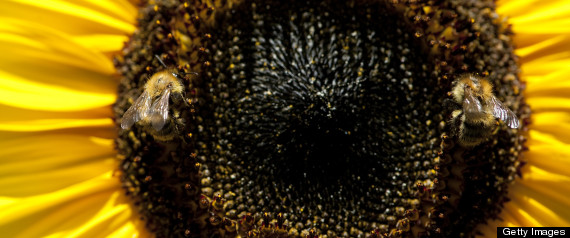THINGS TO DO:
Plant cool season veggies from seed. There are many cool season vegetables that can be planted now. These are vegetables that like cooler weather to germinate and grow but bolt, get bitter or go to seed when the weather turns warm. We planted lettuce during a warm spell in December, covered it with floating row cover, and it is doing quite well.
 |
| Lettuce/Spinach Mix planted December 15th, 2014. |
 |
| Kale planted October 1st, 2014 that we have been cutting all winter. | |
|
|
Since this week is supposed to be warm with no freezing nighttime temperatures predicted, it would be a good time to plant. Amend your soil as needed with a source of organic matter such as Back to Earth Compost Blend, something to promote root growth like Soft Rock Phosphate or Bone Meal and a 'multi-vitamin' of Greensand or Kelp. Plant seed according to package directions, keep soil moist until germination occurs and then water more deeply and less often. Fertilize with Fox Farm Fertilizers. You may want to cover with floating row cover to protect your vegetables from birds and cold. Seeds to plant now would include Lettuces, Radishes, Carrots, Beets, Kale, and Onions. Here is a complete list of when to plant what:
SILVER CITY’S SUGGESTED PLANTING TIMES
ASPARAGUS (P) MARCH1-APRIL30
BEANS, BUSH (S) MAY1-31 & JULY1-31
BEANS, POLE (S) MAY1-31
BEANS, LIMA (S) MAY1-JULY15
BEANS, PINTO (S) MAY1-31
BEETS (S) MARCH1-APRIL15 & JULY15-AUGUST1
BROCCOLI (S) (P) MARCH15-APRIL1 & JULY1-15
BRUSSELS SPROUTS (S) (P) APRIL1-MAY15
CABBAGE (S) (P) MARCH15-31 & JULY1-15
CANTALOUPE (S) (P) APRIL15-30
CARROTS (S) FEBRUARY15-APRIL 1 & JULY1-AUGUST1
CAULIFLOWER (S) (P) MARCH15-31 & JULY1-AUGUST1
CHARD, SWISS (S) (P) MARCH1-APRIL15 & JULY1-AUGUST1
CORN, SWEET (S) APRIL20-JULY1
CUCUMBER (S) (P) APRIL15-MAY15
EGGPLANT (P) APRIL15- MAY15
GARLIC (Bulb) SEPTEMBER15-NOVEMBER15
LEEKS (S) FEBRUARY15-MARCH15
LETTUCE, HEAD (S) (P) MARCH1-15
LETTUCE, LEAF-ROMAINE
-BUTTERHEAD (S) (P) MARCH1-31 & JULY15-AUGUST15
OKRA (S) APRIL15-30
ONIONS (S) (Sets) FEBRUARY15-MARCH15 & SEPTEMBER1-31
PEAS (S) FEBRAURY15-APRIL15
PEPPERS,BELL,CHILES (S) (P) APRIL15- MAY15
POTATOES, RED-RUSSET-
WHITE (SP) APRIL1- MAY15
POTATOES, SWEET (SP) MAY15-31
PUMPKIN (S) MAY1-15
RADISH (S) MARCH1-APRIL30 & SEPTEMBER1-30
SPINACH (S) (P) FEBRUARY15-MARCH15 & AUGUST1-30
SQUASH, SUMMER (S) (P) APRIL15-JULY1
SQUASH, WINTER (S) (P) APRIL15-MAY15
TOMATOES (S) (P) APRIL15-MAY15
TURNIPS (S) MARCH1-APRIL15 & JULY1-AUGUST15
WATERMELON (S) (P) APRIL20-MAY20
(S) =plant by seed; (P) = plant live transplants; (SP) =plant seed potatoes or use pieces of organic potatoes
Last frost date in the Grant County area is April 15-May 15 depending on the year and microclimate you are in.
Grant County Extension Service has more free information at 2610 N. Silver Street, Silver City (575) 388-1559.
Stake trees. With spring just around the corner you know that the winds can't be far behind. So now is a good time to assess which of your trees need staking. Any tree that can not stand erect and straight on its own will need support until it becomes strong enough. If your tree came in a container and was attached tightly to a growing stake you will need to remove that stake and restake it. To properly support a new tree use two stakes, one on each side of the root ball, perpendicular to the prevailing winds. Our strongest spring winds usually come from the west. Tie your tree tightly enough to support it but loosely enough that it can move and gain strength. Use expandable tie or wire encased in old hose, innertube or other material that won't damage bark. Check your ties often during the growing season and adjust them if necessary. Once your tree has become strong enough to stand on its own remove the stakes. This will usually only take a couple of years.
PLANT OF THE MONTH:
Delosperma. This ice plant is a fast growing, evergreen groundcover. There are many different varieties of ice plant. Some that are weeds in coastal areas, large-leafed ones that are not cold hardy here and huge flowering genera. But the Delosperma is THE genus that will grow and thrive in the Silver City area. The leaves are small and fleshy and range in color from dark to light green. The flower colors differ between species. Cooperi is purple-pink, nubigenum is yellow, dyeri is red and then there are hybrids like 'Mesa Verde' which is coral-pink and the tricolored orange, red and lavender 'Fire Spinner'. All of these ice plants are drought tolerant and hardy to Zone 5 or 20 degrees below zero. They like full sun which makes their flowers sparkle and would do well in the front of a perennial bed, along a walkway or in a rock garden.
 |
| Delosperma 'Fire Spinner' |
































